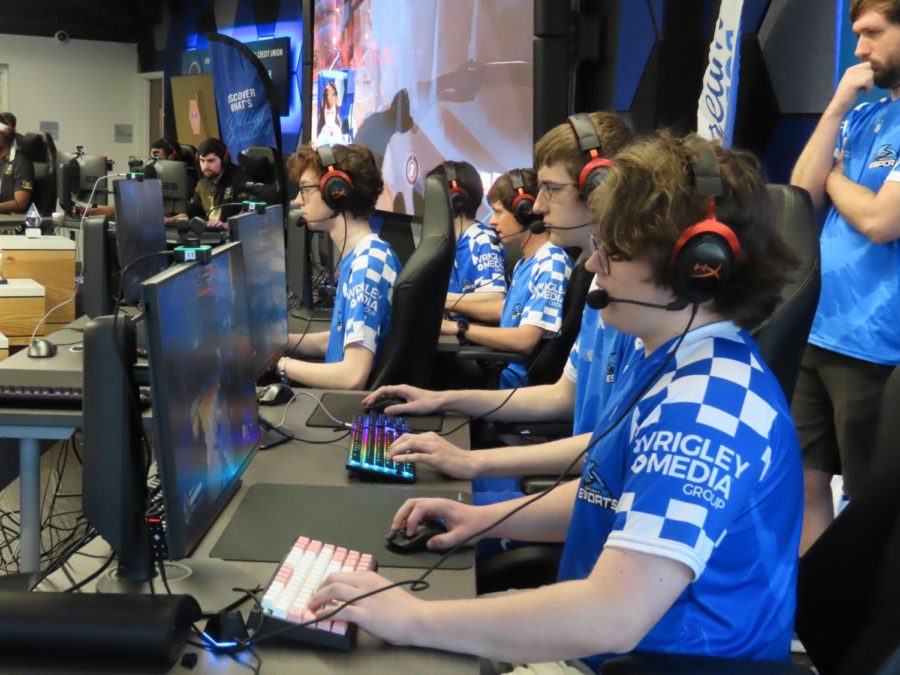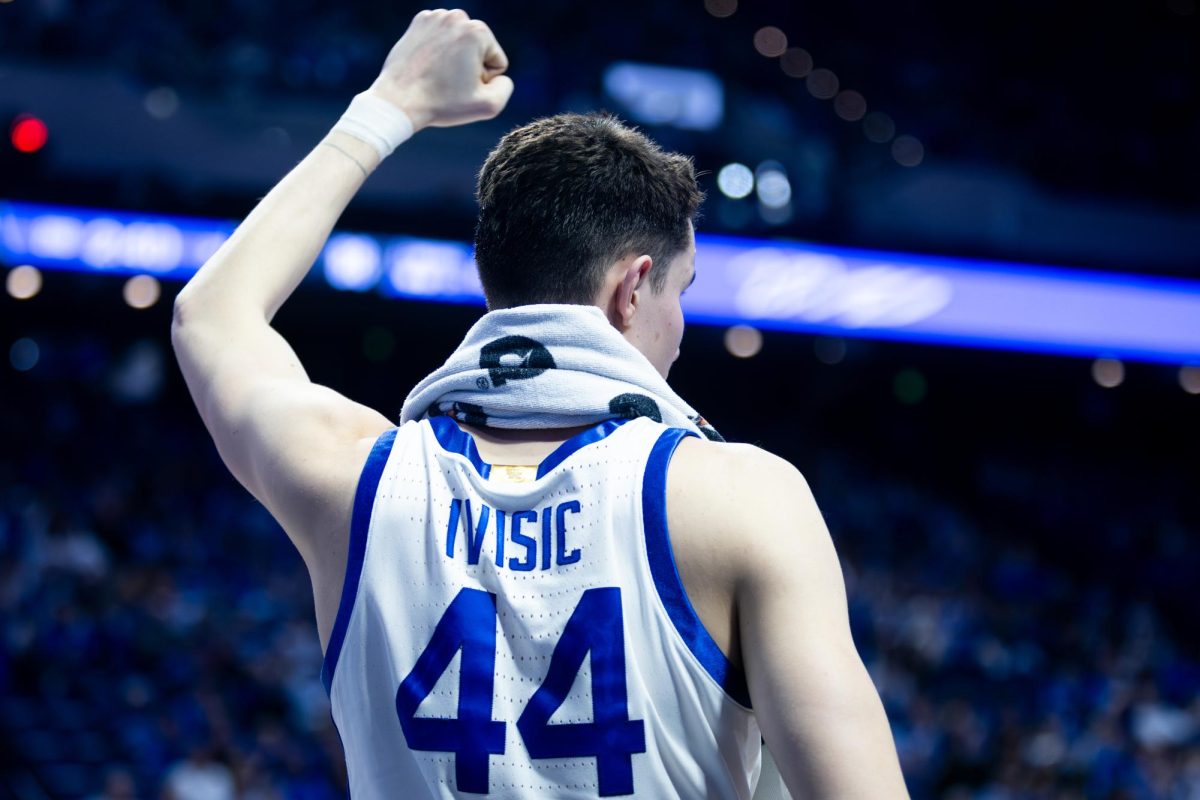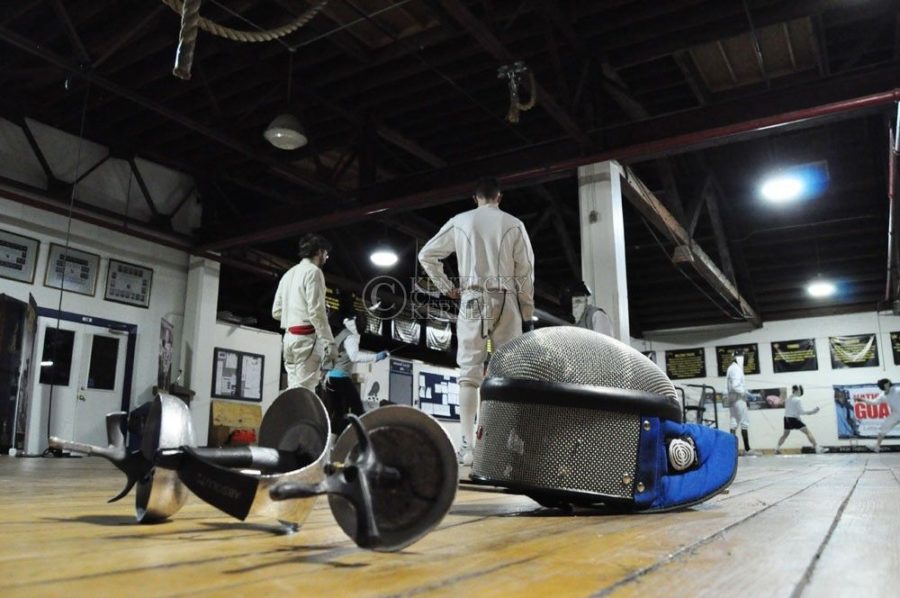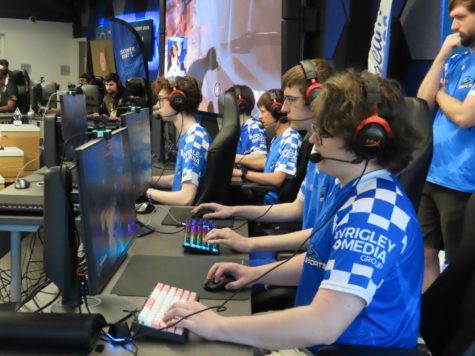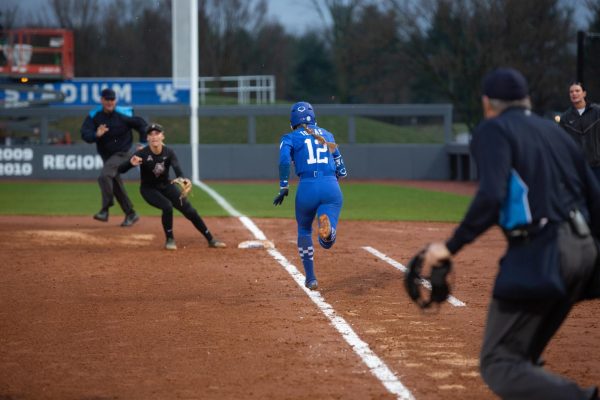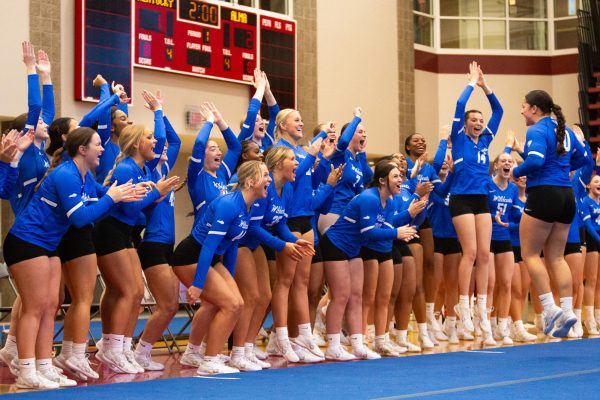En guard: UK fencing a ‘close-knit group’
November 19, 2010
By Hayes Gardner
Every Tuesday and Thursday evening in the Buell Armory Building, about 12 Cats work on footwork, blocking and other skills for their sport. Instead of seeing a basketball or Coach Cal, however, observers would find UK’s fencing club.
Although the club has been around for at least 20 years, the team’s intentions then and now are one in the same. The current UK fencers are make up intimate club focused on improving the fencing skills of themselves and of each other. With 12 to 15 members and no official coaches, the team members rely on each other for assistance.
Club Presidents Alex Kreiser and John Kille act as the leaders of the team and guide the other fencers in enhancing their skills.
Kreiser described fencing as “physical chess between two people.”
Three weapons are used in fencing: the foil, the epee and the sabre. Kille teaches the foil specifically, Kreiser is the epee instructor and both help out with the sabre. Each weapon has a specific target area, and each hit to the specific zone earns a fencer one point. The first to 15 wins.
Much of the sport’s “common knowledge” isn’t so common to non-fencers. In fact, many of the UK fencers didn’t understand the rules of fencing when they started the sport in college.
With few opportunities for fencing in high school, the UK fencing club is aware most students have little idea of what fencing is about, so all students are invited to join the club.
The UK team competes in tournaments, and some students compete individually in others. UK’s first tournament of the season will be a dual tournament against Louisville in February. A typical tournament consists of pool play and a bracket-style tournament, ending with a champion.
Points are scored based on first-, second- and third-place finishes in all three weapon events, and the team with the most points is the tournament champion. Last year, UK swept in foil and epee and won the tournament, and it hopes to repeat this year.
In practice, fencers work on skills like attacking, blocking and footwork for the first half of practice and then exhibit what they’ve learned in the second half with one-on-one matches.
Fencing is a skill-oriented sport, Kreiser said, and good fencers need agility and skill to hit their opponent and earn a point. The goal of practice is to improve on skills while having a good time.
“We’re a laid back club. We’re all friends,” he said.
Kille said he enjoys the sport for reasons other than team unity.
“Fencing gives you an opportunity to blow off some steam,” he said. “It’s a great stress reliever.”
The club’s membership is set for this semester, but students will have the chance to join at the beginning of the second semester. Anyone interested can attend a practice at 8 p.m. in the Buell Armory Building Tuesday or Thursday, or can contact Kreiser or Kille.
The club knows the advantage of being a smaller sport, primarily because it believes the size forms the close-knit group it sees today.
“We may be a club,” Kille said. “But we think of ourselves as a team.”







































